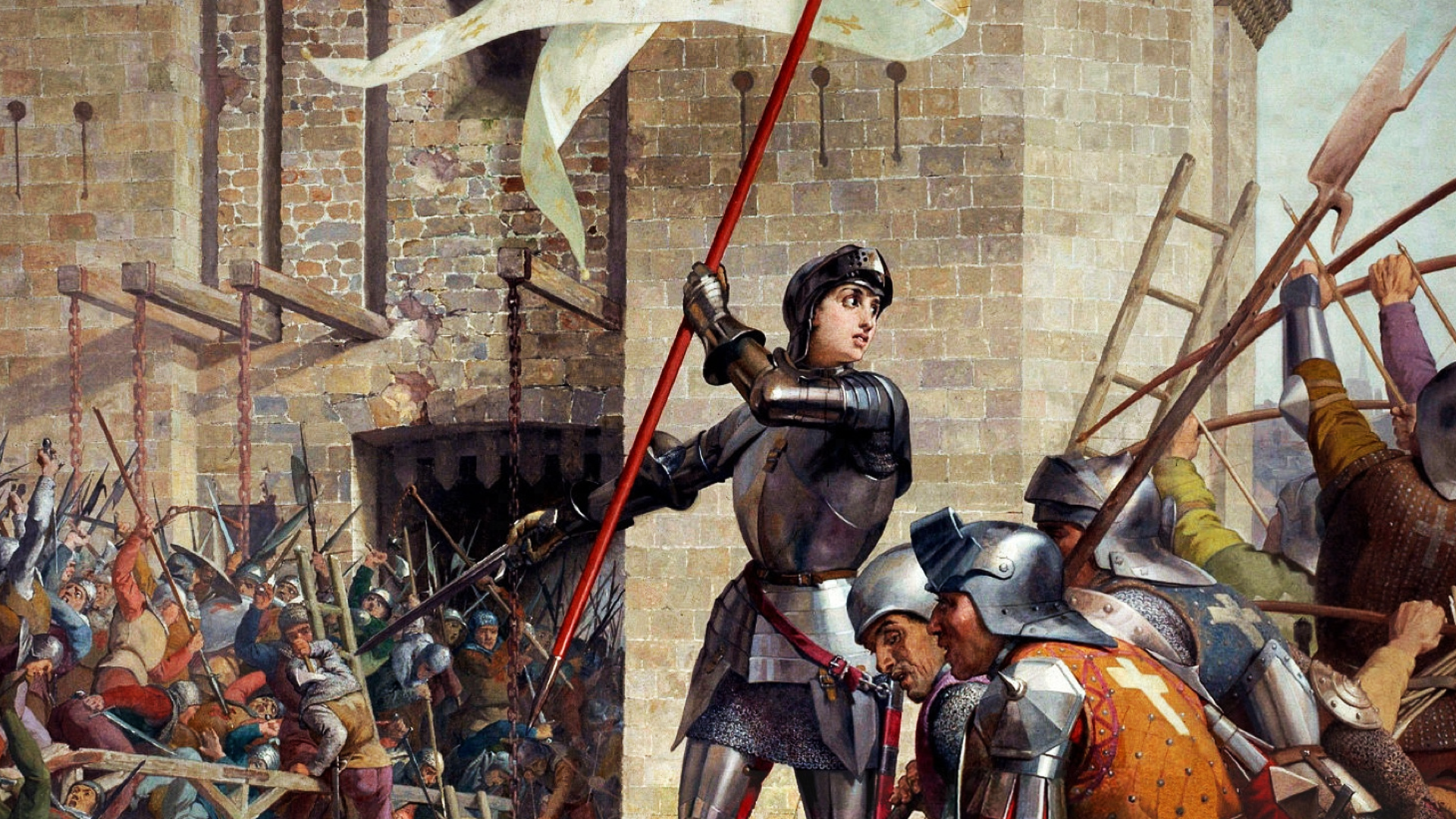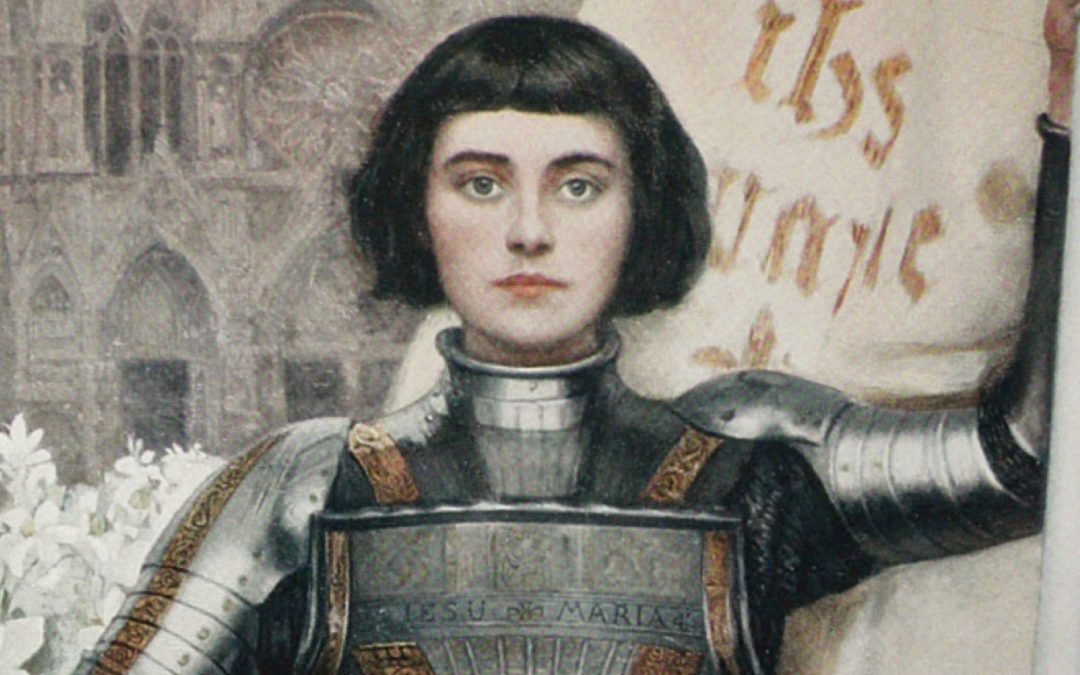Joan of Arc

Biography
Joan of Arc was born around 1412 in Domrémy, a small farming village in northeastern France, during one of the most turbulent periods in the country’s history (the Hundred Years’ War between France and England). At the time, large parts of France were under English control or occupied by their Burgundian allies, and national morale was at a breaking point. Joan grew up in a devout Catholic household, with little formal education, but a strong sense of faith and community responsibility.
At the age of 13, Joan began to experience what she described as divine visions and voices, messages she believed came from saints such as Michael, Catherine, and Margaret. These visions gave her a clear and extraordinary mission: to drive the English out of France and see Charles VII crowned as the rightful king. In a deeply religious and patriarchal society, this claim was both shocking and dangerous, but Joan’s certainty never wavered.
In 1429, after convincing local officials and eventually Charles VII himself of her mission, Joan donned armor and rode at the head of French troops to relieve the city of Orléans, which had been under siege for months. Her presence and confidence inspired the soldiers, and within days, the French won a decisive victory. This triumph became a turning point in the war, lifting national spirits and setting in motion the events that would lead to Charles VII’s coronation.
Following the victory at Orléans, Joan played a key role in guiding Charles VII to Reims, the traditional site of French coronations, through enemy territory. Her ability to inspire loyalty and rally support in hostile regions demonstrated not only her courage but also her strategic influence. In July 1429, Charles was crowned, fulfilling the core goal Joan had set out to achieve.
However, Joan’s success also made her a target. In 1430, she was captured by Burgundian forces and sold to the English, who viewed her as both a political and spiritual threat. Her trial in Rouen was not only a legal proceeding but also a calculated act of propaganda, aimed at discrediting her and, by extension, Charles VII’s legitimacy.
Joan was charged with heresy, witchcraft, and cross-dressing—wearing men’s military clothing being considered a defiance of church authority at the time. Despite intense interrogation and the threat of execution, she refused to recant her claims of divine guidance. On May 30, 1431, at just 19 years old, she was burned at the stake, becoming both a martyr and a symbol of French resistance.
In 1456, a retrial ordered by Pope Callixtus III declared her innocent, recognizing the political motivations behind her execution. Centuries later, in 1920, the Catholic Church canonized Joan as a saint. Today, she stands as a global icon of faith, courage, and the power of conviction to challenge entrenched systems of power.
Joan’s legacy endures because she redefined what leadership could look like. She proved that determination, moral clarity, and belief in a cause could cut through societal limitations, changing the course of history and inspiring movements for justice, independence, and equality for centuries to come.
Joan of Arc didn’t just step into history—she charged into it, shattering every expectation placed on her by society. At a time when women were expected to remain silent, invisible, and obedient, Joan stood at the center of battlefields, commanding soldiers and reshaping the fate of France. Her life is proof that leadership is not about age, status, or even formal education—it’s about conviction, courage, and the willingness to act when the world tells you to stand down. Joan’s unwavering belief in her mission, even in the face of betrayal and death, continues to inspire movements for justice and equality. She shows us that bravery can come from the most unexpected places, and that one voice—firm, fearless, and unshakable—can rally a nation and echo through the centuries.
?
How did Joan of Arc’s gender challenge the societal norms of medieval Europe?
What strategies did Joan of Arc use to inspire and lead her troops?
How did political motivations shape Joan of Arc’s trial and execution?
Why do you think Joan of Arc’s story continues to inspire people centuries later?
What similarities can you see between Joan of Arc’s leadership style and that of other famous historical figures?
Dig Deeper
Martyr, saint and military leader Joan of Arc, acting under divine guidance, led the French army to victory over the English during the Hundred Years' War.
Discover more

Claudette Colvin
Claudette Colvin’s bold defiance of unjust Jim Crow laws came nine months before Rosa Parks’ more widely known protest and was a crucial spark in the fight to end bus segregation.

Dorothy Thompson
Dorothy Thompson was one of the most fearless journalists of the 20th century, using her voice to expose the rise of fascism before the world fully grasped the danger.

Harry Houdini
Harry Houdini wasn’t just a magician, he was the escape artist who made the impossible look easy.
Further Reading
Stay curious!
